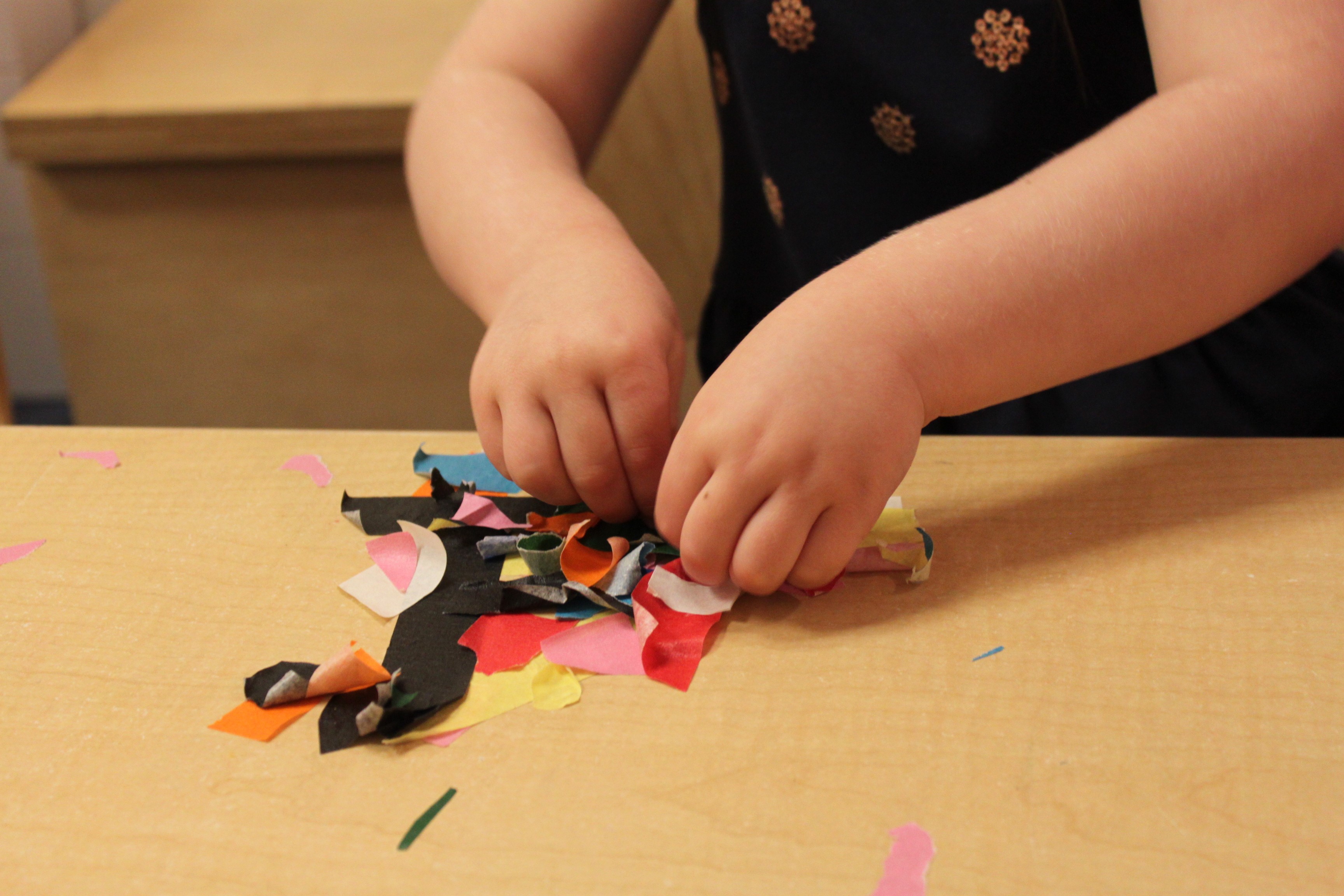The Art of Teaching… Art

Sari Lipschitz grew up in South Florida and moved to New York after graduating from the University of South Florida. Sari always had a strong passion for working with children. She received a master's degree in Early Childhood Special Education from Fordham University and began her work at JCC Manhattan as a floating teacher. Sari is now in her second year as Atelierista - a studio and curriculum teacher at the JCC.
When did you realize you wanted to be a teacher?
In second grade, I remember I didn’t feel the teacher’s lessons were what I needed. That very traditional teaching was for one kind of learner and I wasn’t that kind of learner. So in second grade I knew I wanted to help kids who were more like me.
How did you find your niche as an educator?
The JCC is a Reggio Emilia-inspired school, which means that they see children, teacher, and classroom as part of the teaching team. Learning this philosophy of education helped me discover who I was as a teacher. We talked about adding an atelierista role; I thought my creative approach could be a good fit.
What is an atelierista?
The atelierista can be called studio or art teacher, but I don’t go by either name. The children know me as ‘Sari.’ They know I work in the open common space in the middle of the school, where they come to work on different projects, and that I also come into their classrooms to work in small groups.
The beauty of starting an atelier in your school for the first time is you can build it from scratch. I attended an international Reggio Emilia conference in Italy. We toured different schools, heard atelieristas share their experiences, and learned how they supply children with materials while documenting them as they play.
How have you integrated that philosophy into your work at the JCC?
When you give children materials, they can learn so much! After studying the science behind yeast, students learned to shape challah. Leading up to Hanukkah, one child was really determined to apply what he learned about grocery stores in the classroom; we helped him build a menorah out of conveyor belt material.
What’s a typical day like at work?
At 8:00 a.m., I’m usually in a classroom reviewing yesterday’s lesson. Later, I’ll be in the common space working with a particular material: blocks, watercolor crayons, clay, etc. In the afternoon, I visit classrooms and work with small groups for “studio time” - sewing, clay, wire, and painting. Even though the students are working with the same material, the outcome can be completely different for each child. The goal is for the children to become experts in whatever materials we’re working with. For example, with clay, they start playing with it completely dry and need to discover what they need to make it not so dry anymore. They learn what happens when you pour water all over it, and instead of telling them what will happen if they add too much water, we allow them to learn it on their own.
What’s one of your favorite materials?
Watercolor crayons. Children work with regular crayons, markers and paint from a very young age, but they don’t usually combine them all into one. Children have to remember to dip watercolor crayons into water. The multi-step process helps them with their development.
How do you support colleagues who teach in the classroom?
I help teachers figure out the best materials for each student to motivate children who are sensory seeking, while encouraging children who don’t like to get dirty. Teachers are invited to browse my supplies and choose materials whenever they want.
Why do you feel arts education is so important for young learners?
As a child, you’re not always able to express yourself with words. Art is a good form of expression. Kids might not say a word but they’ll draw a picture that tells you exactly how they’re feeling. I think art is one of the most important mediums for kids and adults alike.
Tell us about a rewarding experience you’ve felt as an atelierista.
While I was in Italy, I had left a bag of potatoes in my fridge at home. When I came back, they had started to grow. I brought the potatoes in and told the kids that while I was away something happened to them. I left it at that. I gave them pens and magnifying glasses if they wanted to take a better look. Some wanted to pick the growths and cut them. Others drew the potatoes. A little 2½ year old girl took my pen and started “writing” the other students’ words, documenting their observations. For close to half an hour, she “wrote everything down.” It was one of the most amazing things; that’s pre-literacy! I keep her picture of her words in my office to inspire me. These little moments are so special.
